Rare Rides Icons: The Mitsubishi Diamante Story (Part III)

Today is the third installment in our coverage of the Mitsubishi Diamante, the Diamond Star brand’s only luxury offering ever sold in the North American market. Part I introduced us to the Diamante via the Sigma. That fancy hardtop Galant gave way to the Diamante in 1992, based on an extended length Galant platform. The second-generation hardtop sedan and its wagon counterpart were finished for 1995 on dealer lots, though fleet buyers (which fleets though?) had a Diamante available to them in 1996. In 1997, Mitsubishi was back with an all-new Diamante and aimed even higher than it had before.
While the first Diamante benchmarked the Acura Legend and planned to be a discount alternative to Honda’s fanciest sedan, the second Diamante aimed its sights at the Lexus ES 300. The near-luxury Japanese sedan market had changed considerably by the mid-Nineties: Acura’s Legend was dead after its second generation wrapped up in 1995, and was replaced by the soft and pudding-like near full-size 3.5 RL. That car was not Legend-like or a good replacement, but we’ll end the tangent there. Meanwhile, the Japanese luxury sedan to beat in the midsize class was the Lexus ES 300, which entered its third generation for 1997. Handy timing for Mitsubishi to introduce some stiff competition, then.
Once again the American customer waited longer for the new Diamante than Japan, which was probably a product planning fail at Mitsubishi in hindsight. There was nearly a two-year lag between the third-gen Diamante’s debut in Japan and its arrival in America late in 1996 as a model-year ’97. When the new Diamante arrived in Japan there was a difference in the lineup to the prior generation: no pillared sedan branded as Sigma. It turned out Japanese customers, though impressed by all the tech present on the hardtop Diamante, were none too interested in the sedan version with its more restrained luxury goal. Sigma sold poorly over its final generation in Japan, and the majority of them found their way into fleet use as a taxi or police car.
The body style that remained was the four-door pillared hardtop sedan, which was then the only style upon which to base the wagon version. Worth noting: While the Japanese market Diamante was made in Japan, versions for all other markets were made in Australia alongside the new Magna. Once again the Magna and its upmarket sibling the Verada were derived from the Diamante. Australian market Diamantes eventually received all-wheel-drive like was optional in Japan. That would’ve been a nice product differentiation for the sedan in the U.S., but Mitsubishi decided to keep four driven wheels Down Under.
There were considerable differences between the Japanese market Diamante (which was more of a flagship) and export Diamantes made in Australia. The suspension in export models was a different (and cheaper) design than Japanese ones. In Japan Diamante continued with a multilink suspension as it had before, but Australian-produced cars had MacPherson struts at the front. Japanese market cars were equipped with optional cloth upholstery as the Japanese often find leather too garish, but all Australian-made Diamantes had leather. Japanese market Diamantes had a steel front cross member for additional rigidity, which was not found on export cars.
In Japan, the Diamante was once again a tech showcase for Mitsubishi. The new car featured a satellite navigation system, and a heads-up display for the driver. Very advanced for its time, there was a radar cruise system that had distance and lane-keeping functions. It worked with a front-mounted camera and some lasers and was directly adopted from its use in the flagship Debonair where the tech appeared in 1992. The Japanese market Diamante also used a new version of Mitsubishi’s active traction control system, which was not introduced on export cars until later. With the exception of the traction control that arrived after introduction, all other tech was held from export Diamantes.
Styling bore a clear family resemblance to the old Diamante, though everything was smoother and softer. The front clip maintained the same split grille, but the second-gen’s pointed central divider chrome didn’t fade back to either side as dramatically as before. Headlamps were again a quad style, but their presentation in the second-generation car looked more Japanese and less inspired by BMW.
Front bumpers were smoother now and tucked much closer to the front end than the shelf-type bumpers on the prior generation. Parking lamps appeared at the corners of the front bumper, and fog lamps were astride of the lower valance instead of the more central placement they had in the prior car. As was common in the era, exterior trim changed to body-colored and was less reliant on chrome. The front end looked tauter, and a bit sportier, which made the old Diamante look a bit dated and formal in comparison.
The side profile was similar between the two cars, with the same pull lever door handles as before. On the new car, the handles were more notable than they had been and sported a chrome trim strip. And that looked cheaper.
The ’96 Diamante sported a chrome trim strip around the entire perimeter of the car that included the bumpers, sides, and rear. The chrome was gone for 1997, and replaced solely by a body-colored rub strip in roughly the same place it was on the old car. The chromed loop around the frameless windows continued much like the old Diamante, but the glass application down the side was not quite as smooth: In particular, the B-pillar had thicker, more visible weather stripping between the panes of glass.
The chrome window trim itself was clumsier on the new car, most notably at the corner of the rear doors where it was clearly two separate pieces. Previously, the pieces curved toward one another and nearly passed as a single continuous bit of trim. The sheet metal at the rear door looked more expensive on the old Diamante, too. The door’s edge curved upward (a classic Japanese frameless window design cue), but had no such finesse on the new-for-97 Diamante.
At the rear, the new Diamante was a stark departure from the old. There was more formal styling than before, and a new chrome strip that served as a trunk handle. Rear lamps were a mimic of the Lancer Evolution, which was an interesting styling call instead of a tie to the Galant. Lamps wrapped around the rear and extended upward as the large lens formed the arc that became the trunk lid. The look at the rear was finished by thicker C-pillars, which narrowed the width of the rear window notably. New body looks were set off by seven-spoke chrome wheels that were very of their time.
Though it wore all-new styling, the Diamante wasn’t so modern underneath. Under the mid-Nineties looks were the same extended Galant platform that had its roots in 1987. Thus, the wheelbase stayed the same 107.1 inches as it had before. Overall length grew for both sedan and wagon, as the sedan increased from 190.2 inches to 194.1″. The wagon also gained about four inches in length, up to 196.1 inches from 192.4 in its first generation guise. Width increased slightly this time, from 69.9 inches to 70.3″. Both versions were taller than before, as overall height increased from 52.6 inches to 53.9 inches.
Engines were generally larger in the second generation Diamante and were again limited to V6 configuration in all markets. The smallest mill on offer was the 2.5-liter 6A13 (a new engine), alongside the 2.5-liter 6G73 that was carried over from before. The 3.0-liter 6G72 made a return for the late Nineties, in 24-valve format as before. Top-tier and newly available in the second-generation car was the 3.5-liter 6G74. Power ranged from 175 horses in the smaller engine, to 270 in the 3.0-liter MIVEC version for the Japanese market.
Again, American customers received zero choice on engine or transmission configurations. The Diamante was imported only with the 3.5-liter V6 shared with the Montero Sport, which made 205 horsepower. There was no longer a manual transmission in this generation, and all markets received either four- or five-speed automatics. The American Diamante used four speeds, which meant 16 mpg city, 24 mpg highway.
There was no longer a boost in power for selecting the highest Diamante LS trim. The five-speed auto was a notable development and was introduced as the world’s first five-speed automatic on a transverse engine car. It featured advanced shift logic and even Tiptronic. But of course, that transmission remained a JDM exclusive, much like all the other interesting features of the Diamante.
Mitsubishi had its newly restyled Diamante on sale for 1997 and was hopeful it would claw back some of the sales it lost as the near-luxury car market moved on to new models while the old Diamante lingered. They even had some annoyingly pretentious new ads, like the one above! Would the second Diamante bring sales success and glory to Mitsubishi? Not quite. We’ll finish up this story tomorrow.
[Images: Mitsubishi]

Interested in lots of cars and their various historical contexts. Started writing articles for TTAC in late 2016, when my first posts were QOTDs. From there I started a few new series like Rare Rides, Buy/Drive/Burn, Abandoned History, and most recently Rare Rides Icons. Operating from a home base in Cincinnati, Ohio, a relative auto journalist dead zone. Many of my articles are prompted by something I'll see on social media that sparks my interest and causes me to research. Finding articles and information from the early days of the internet and beyond that covers the little details lost to time: trim packages, color and wheel choices, interior fabrics. Beyond those, I'm fascinated by automotive industry experiments, both failures and successes. Lately I've taken an interest in AI, and generating "what if" type images for car models long dead. Reincarnating a modern Toyota Paseo, Lincoln Mark IX, or Isuzu Trooper through a text prompt is fun. Fun to post them on Twitter too, and watch people overreact. To that end, the social media I use most is Twitter, @CoreyLewis86. I also contribute pieces for Forbes Wheels and Forbes Home.
More by Corey Lewis
Latest Car Reviews
Read moreLatest Product Reviews
Read moreRecent Comments
- Flashindapan Beautiful color combinations. I assumed they stop selling the TT here at least five or six years ago.
- Carson D Just don't be the whistleblower who reports on the falsification of safety data. That's a deadly profession.
- Carson D I'd have responded sooner, but my computer locked up and I had to reboot it.
- Todd In Canada Mazda has a 3 year bumper to bumper & 5 year unlimited mileage drivetrain warranty. Mazdas are a DIY dream of high school auto mechanics 101 easy to work on reliable simplicity. IMO the Mazda is way better looking.
- Tane94 Blue Mini, love Minis because it's total custom ordering and the S has the BMW turbo engine.



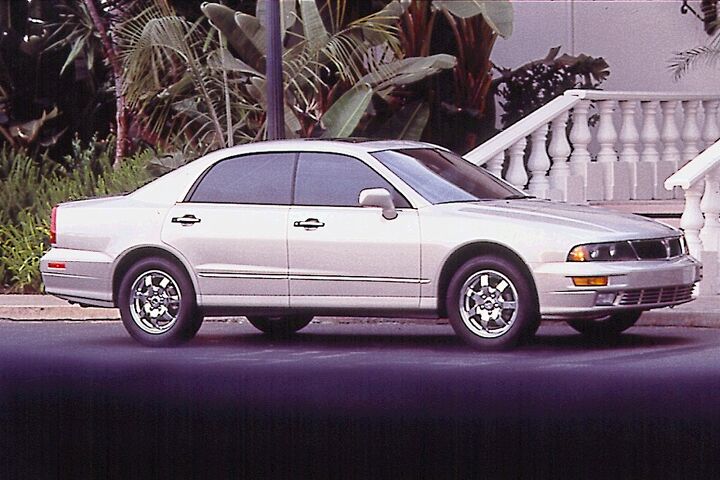




















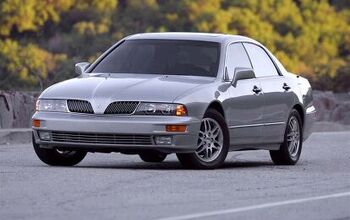
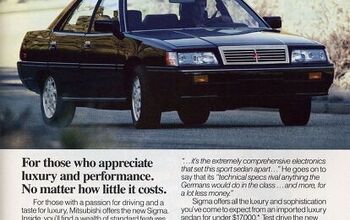
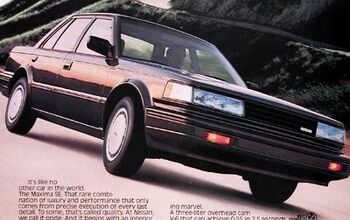
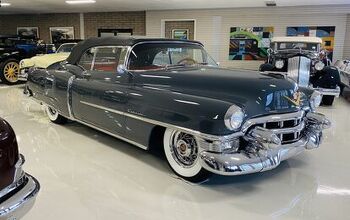










Comments
Join the conversation
I've owned 2 Diamante LS models already, and I want to say that they have been really great reliable vehicles with no major repairs needed! Other than me flipping my first one over when someone cut me off a few years ago. That was my 1997 model. Then a few months after my accident, I found a pristine 2002 LS model with all the service records from the original owner. I bought it with around 120,000 miles on it and still driving it at about 195,000 miles almost. I will drive it until the wheels fall off!.....
I have a Mitsubishi Diamante VRX 2003,and I think this is one of the luxury and sport car.